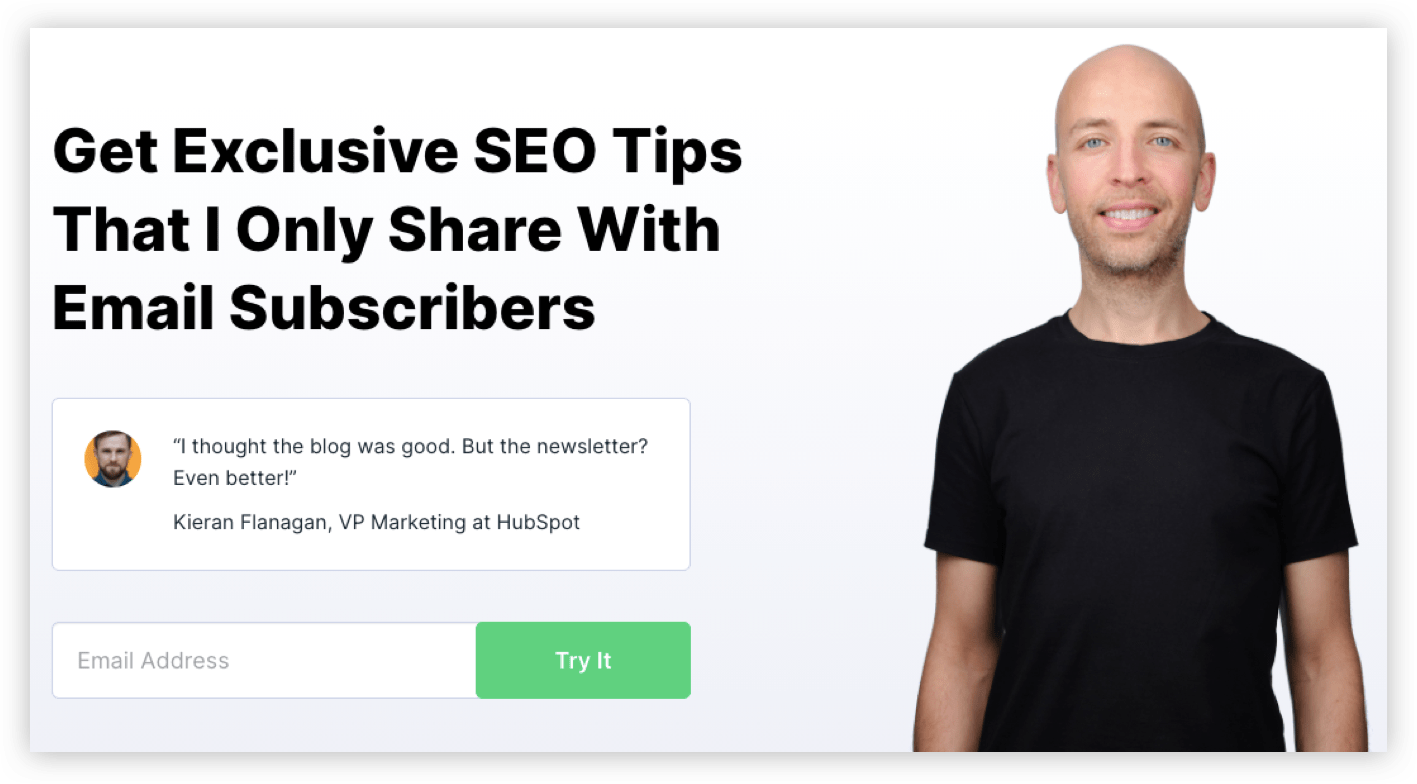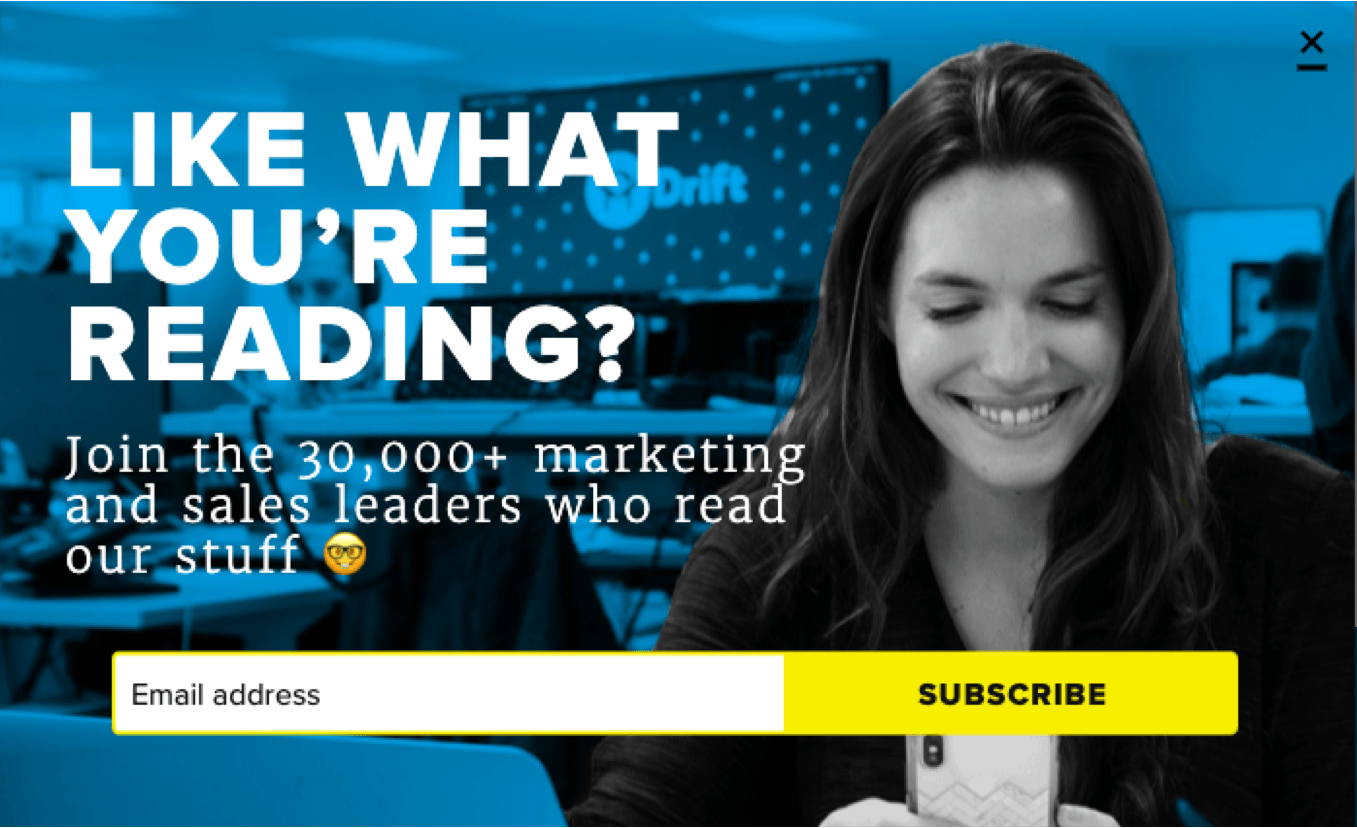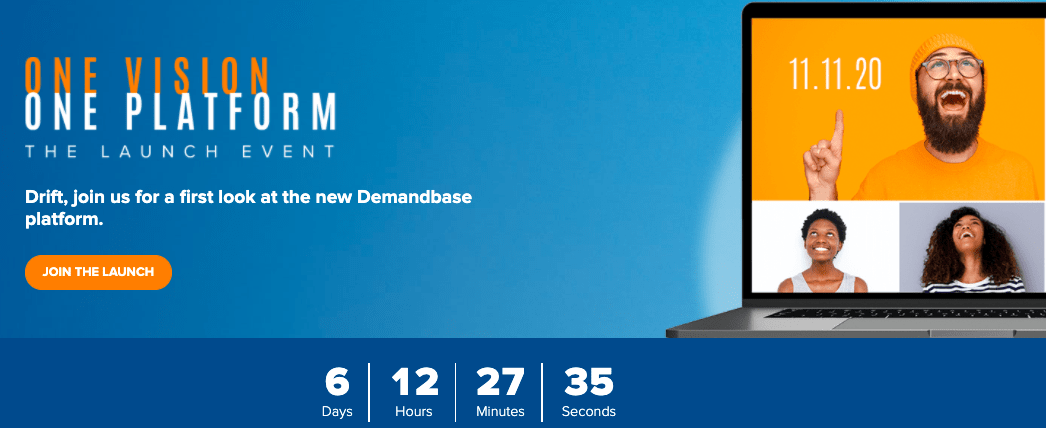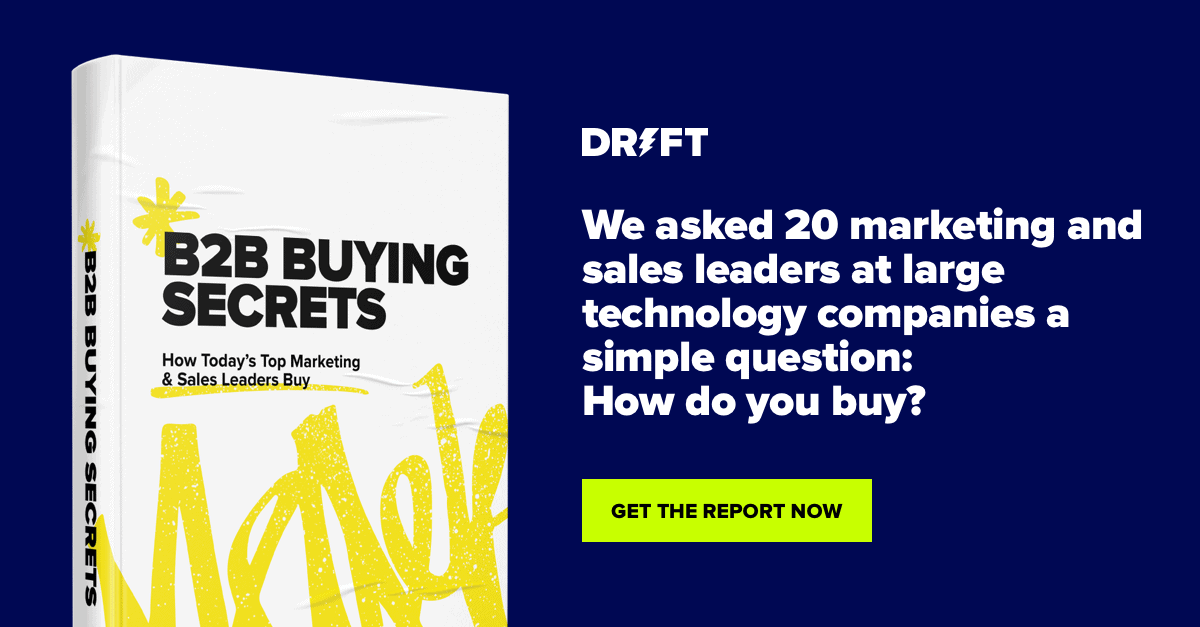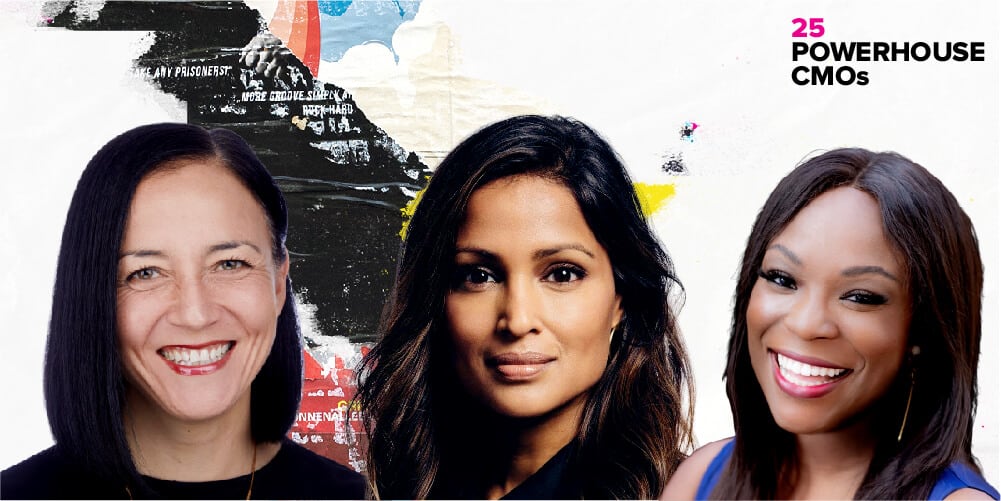Everyone is looking for the secret to growth.
We spend a ton of time trying to hack it. A/B test it. Or – if we’re lucky – we’ve already found that elusive bright spot, and now all we have to do is double down on it.
But long before we were trying to understand human behavior in the digital world, psychologists like Robert Cialdini were studying it in the social realm to understand how humans make buying decisions. For almost three years, Cialdini researched the training programs of people in so-called “influence positions” – like sales and marketing – to uncover exactly how some people got others to “say yes” so often.
The result of that research was Influence: The Psychology of Persuasion. Originally published in 1984, the book has seen multiple editions and become a seminal work on the social psychology behind buying. So it comes as no surprise that fans of the book include marketing and sales professionals around the world – and Drift’s CEO, David Cancel. He even dedicated a whole episode of Seeking Wisdom to break down Cialdini’s findings, principle by principle.
“If you’re a marketer and you’re listening to this podcast, and you have not read this book, you’re a poser,” David Cancel says.
Strong words, so I suggest you check out the full podcast right here 👇
But in the meantime, I’ll run you through the psychology behind the buying process and Cialdini’s six secrets for getting people to say yes.
1. Reciprocity
When someone pays you a compliment or does something nice, how do you feel afterward?
If you feel like you need to return the favor – even if it was uninvited – then you’ve experienced what Cialdini says is the human inclination towards reciprocity. Obviously, reciprocity greases all sorts of social interactions in our daily lives. But in situations where a specific outcome is desired – say, the buying process – reciprocity can be a universal tool for driving a specific outcome.
Take, for example, the experience of shopping at Costco. Those samples you see everywhere are more than just a handout – they’re powerful catalysts for providing reciprocity.
“If you take a sample from someone at Costco, you’re more inclined to want to do business with that person, or even buy that product,” DC explains.
Same thing happens in B2B sales and marketing. When you give a prospect something of value first – whether it be information, advice, a potential solution to a business challenge – you increase the odds that they’ll give you something back in return.
B2B Example to Steal:
One easy path to reciprocity? Offer up something exclusive. Make your prospect feel like they’re getting in on something special. Like this newsletter CTA from Backlinko 👇
It’s a simple, straightforward pitch that tells you everything you need to know about the value you’ll be getting.
2. Social Proof
In the B2B space, it’s not enough to have the best product or the most effective demand gen campaigns. You must also have social proof, like testimonials and stories from your best customers. That’s because, according to Cialdini, one of the ways humans determine what is correct is to figure out what other people think is correct.
“If you go to Amazon and you go buy a product, you’ll see the ratings and reviews. And the reason the ratings and reviews are there is to trigger social proof,” DC explains.
By looking to others to help define what is “right,” we invoke the wisdom of the crowd to make important buying decisions. It’s the same when you feature the faces of customers on your website. Those faces provide social proof that others came to the same decision about purchasing a product you’re also considering.
B2B Example to Steal:
There’s so much to love about Gong, but let’s just talk about how they nail social proof with their “Raving Fans” page that’s loaded with examples of happy customers who’ve shared their success with their broader networks on LinkedIn and Twitter 👇
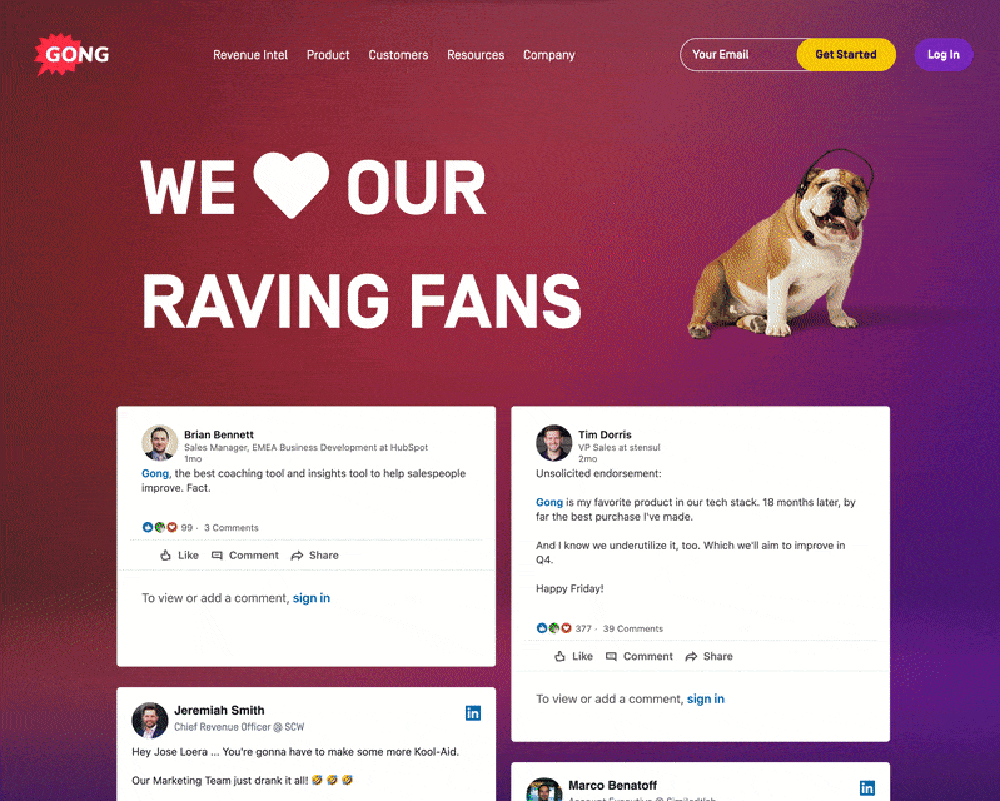
The sheer volume/infinite scroll of social posts provides all the validation potential buyers need that Gong is worth the investment.
3. Commitment
We all crave consistency. But the reality is that achieving the kind of consistency we want is easier said than done.
Looking at Cialdini’s ideas around the commitment bias, we start to understand how that influences decision-making.
“Once we make a decision, we are more likely to stick to our decisions and be stubborn about that decision, and that’s called commitment consistency. As soon as we make a commitment, we have a bias to want to stick to that commitment, and not retreat from it,” DC says.
A go-to example for this principle is signing up for a gym membership. It’s an oldie but goodie – and for a reason. Because once you can get the commitment from your buyer, it’s all about delivering consistency after that. And that’s something sales and marketing can deliver on.
B2B Example to Steal:
Throughout the customer journey, you’re going to be making a lot of asks of your buyers. At the beginning of the relationship, the key is to start small. Make incremental asks. A good place to start is with a CTA to subscribe to your newsletter. Whether it’s a weekly, monthly, or quarterly – you’ll be asking your buyers to make a small commitment upfront. Then you’ll follow up with a consistent cadence to show them their commitment was worth it 👇
Also, throwback to Principle #2 from Cialdini, because that is my smiling face you’re seeing. Social proof can come in many forms.
4. Authority
According to Cialdini, people fall for even the perception of authority during the buying process.
“Always works,” says DC.
That’s why it’s so powerful in the context of sales and marketing, and particularly when it comes to getting people to say yes to a purchase.
B2B Example to Steal:
Whether it’s pulling in top customers as references to close a deal, or featuring testimonials from prominent C-level executives on your website, you’re capitalizing on people’s innate respect for those with power or authority.
Heres’s a great example from Clari, where their customer Zoom Video Communications (yes, that Zoom), gives a singing endorsement 👇
It’s pretty hard to argue with something if the CFO of Zoom is a fan…just saying.
5. Scarcity
Ever go to buy something online, but when it comes to pulling the trigger, you just can’t do it?
It’s when the merchant adds an element of scarcity to that product description, your purchase suddenly becomes 10x more urgent.
I’m talking about the:
“Only two left!”
Or:
“Hurry, they’re almost gone!”
And also the:
“Order in the next hour and get it by tomorrow!”
Inject a little potential for scarcity into the buying process and people start making decisions. But it’s not the product that motivates them to do it. It’s the reality of losing out on it entirely. The potential loss is what drives the behavior and that’s hugely influential on people during the buying process.
B2B Example to Steal:
We might be living in a virtual event world (where most tickets are free), but that doesn’t mean that scarcity has gone away. If anything, it’s become an even more important tool for marketers.
Enter: the countdown clock. I really like this one from Demandbase 👇
And they even knew it was me (okay, Drift) paying them a visit. That’s good account-based marketing.
6. Liking
People are easily persuaded by other people that they like, says Cialdini.
“The more likable someone seems to you…the more willing you are to do business with them,” explains DC.
The reverse is also true, as he points out.
“One of the traps that we fall into with this bias, this liking bias, we are often – all of us – unwilling to learn from people we don’t like,” DC says.
And this is a missed opportunity because people (even those we might find unlikable), can teach us something and help us grow.
B2B Example to Steal:
But let’s be clear. When it comes to Snowflake, what’s not to like? Besides being the biggest software IPO in history (last I checked they were valued at $70B), they’re a company that isn’t afraid to go against the grain. So it was only a matter of time until we teamed up 👇
Joining forces with a well-respected brand in your space – whether it be on a webinar (like the one we did with Snowflake), an eBook (like this one with Adobe), or a podcast (like this one with ThoughtSpot) – can help expand your reach (and your liking).
Getting to Yes (and to Revenue) Faster
There’s a reason Cialdini’s work is still relevant 30+ years later. Because classics like Influence never go out of style.
It’s a book that’s helped countless sales reps and marketers 10X their careers. What’s stopping you from putting Cialdini’s principles to the test?
Editor’s Note: This article was originally published in April 2018 and has been updated to reflect new information.





